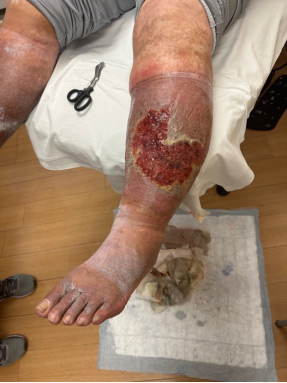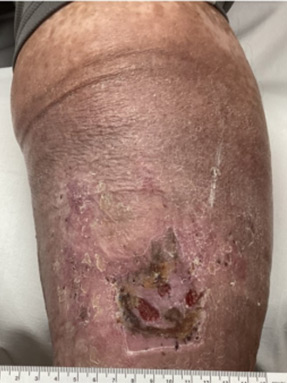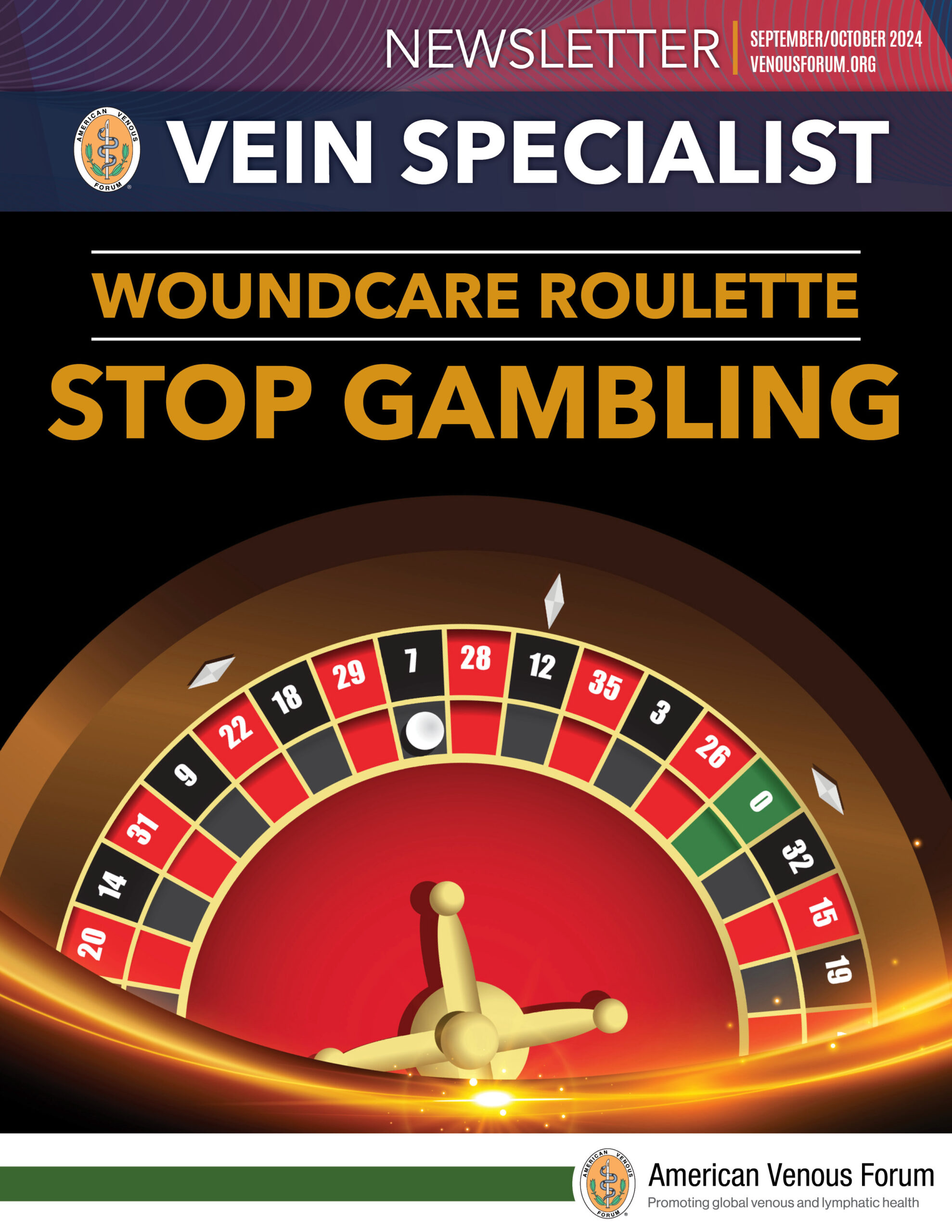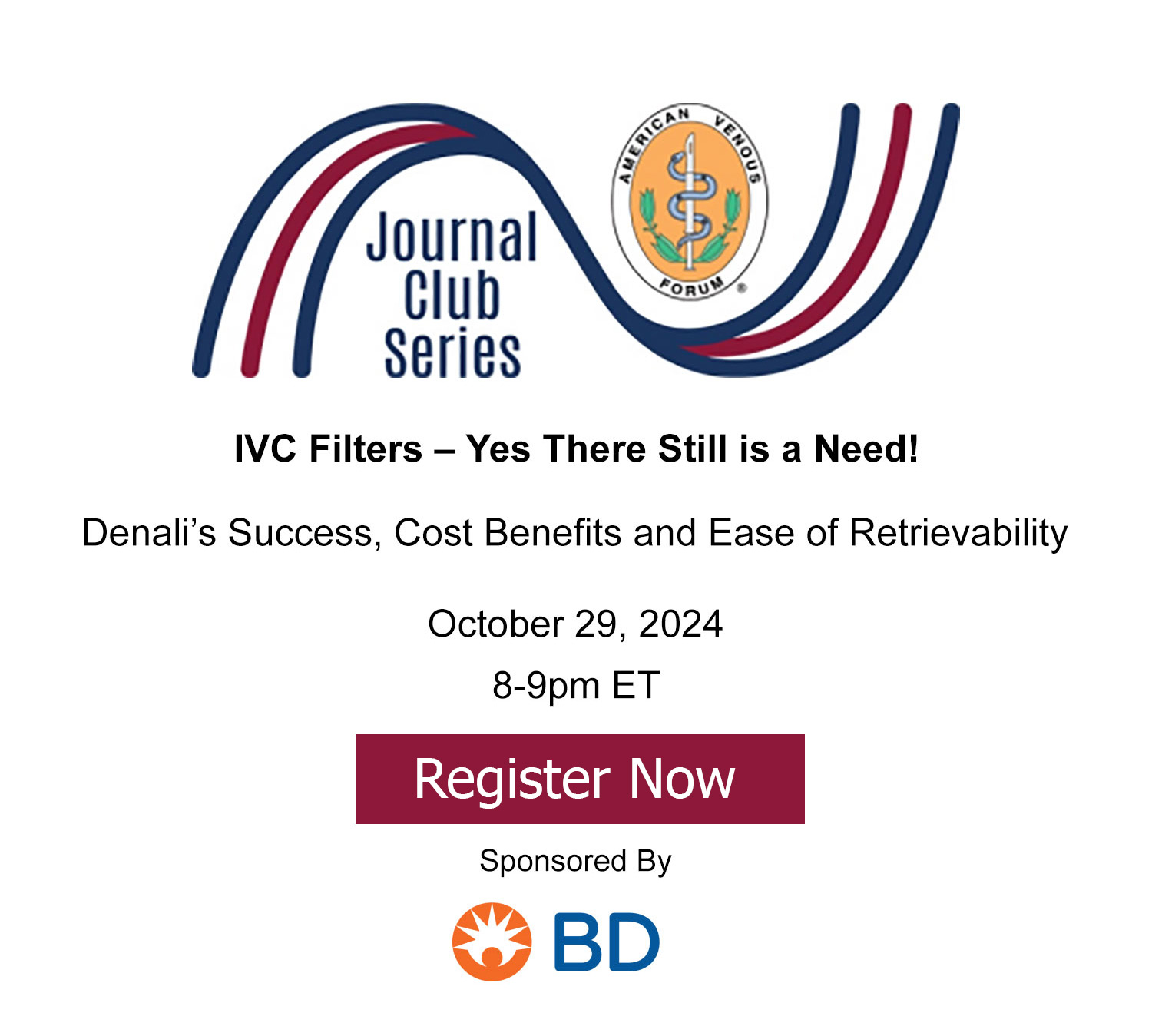September/October Issue of vein specialist
Woundcare Roulette
STOP GAMBLING
Table of Contents
Letter from the Editor
Alisha Oropallo, MD and William Marston, MD
Venous Leg Ulcers: Meticulous, Multi-Modal, and Malleable Care Plans
Karen L. Bauer, DNP
Innovations in Venous Wound Care: Emerging Technologies
Alisha Oropallo, MD FACS
Lymphedema Of Venous Etiology and Venous Leg Ulcers; Achieving Accelerated Outcomes
M. Mark Melin, MD, Monika Glovizcki, MD, PhD, and Michael Y. Shao, MD
Open Vein Surgery is Not Dead Yet!
John C. Lantis II, MD, FACS and Allegra Fierro, MD
The Crucial Role of Arterial Testing in Managing Wounds from Chronic Venous Insufficiency
Jeffrey Silpe, MD, MS-HPEd and Yana Etkin, MD, FSVS, FACS
Advocating to Improve Wound Care: AVF and the Alliance of Wound Care Stakeholders
Marcia Nusgart, R.Ph.
A Message from the Wound Healing Society
Sundeep G. Keswani, MD
Membership Corner
Venous Equity and Inclusivity (VEI) AVF Committee
Karem Harth, MD
AVF Attends EVS Meeting in Charleston, SC
Welcome New Members
July and August 2024
EDITOR-IN-CHIEF
Steve Elias, MD
EXECUTIVE EDITOR
John Forbes, MBA
MANAGING EDITOR
Allie Sherrill
COVER ARTIST
Christine Rataj
PUBLICATION DESIGNER
Anthony Eaves
Letter from the Editor
Journey to Wound Care: A Vascular Surgeon’s Perspective

Alisha Oropallo, MD, FACS, FSVS, FAPWCA, FABWMS
Member, The American Venous Forum

William Marston, MD
Past President, The American Venous Forum
As vascular surgeons, we are accustomed to navigating the intricate pathways of arteries and veins, restoring blood flow, and preserving limbs. Yet, for many of us, wound care has been a peripheral concern, a complication rather than a core focus. Our journey reflects this evolution.
We both recall a time when wounds, especially chronic ones, were viewed almost as an afterthought, a frustrating obstacle to overcome in the pursuit of vascular health. We would address the underlying vascular issues, hoping the wounds would simply follow suit. But they often did not.
Then came a shift, a growing recognition that wounds are not merely passive bystanders but active participants in the complex interplay of venous and lymphatic dysfunction. Chronic wounds signal deeper trouble like a persistent alarm bell, demanding our attention and expertise.
This realization dawned on us during countless challenging cases involving patients with long-standing wounds. Despite our best efforts to improve blood flow, the wounds remained stubbornly resistant to healing. That was when we began to appreciate the intricate relationship among venous insufficiency, lymphatic congestion, and the delicate balance of tissue repair.
Just as a skilled mechanic delves beneath the hood to diagnose a car’s engine trouble, we as vascular surgeons must look beyond the surface of the wound to understand the underlying mechanisms driving its chronicity. This requires a shift in perspective, and an appreciation for the delicate interplay of vascular disease, lymphatic drainage, and the body’s innate healing capacity.
This special issue of Vein Specialist embodies this shift. Through its insightful articles, we explore the latest research and clinical practices at the intersection of wound care and vascular disease. We delve into the role of venous insufficiency, lymphatic dysfunction, and inflammation in wound development and healing. We discover new innovative therapies and technologies aimed at optimizing wound management and improving patient outcomes.
However, we also recognize that this issue merely scratches the surface of this complex field. Successful wound care demands a holistic approach, addressing not only the physical aspects but also the patient’s nutritional status, underlying medical conditions, and psychosocial well-being. It is a multi-faceted challenge that requires collaboration among various healthcare professionals and a commitment to ongoing learning and innovation.
We hope that this issue serves as a catalyst, inspiring us to embrace wound care as an integral part of our vascular practice. By recognizing the interconnectedness of vascular health and wound healing, we can improve patient outcomes.
Venous Leg Ulcers: Meticulous, Multi-Modal, and Malleable Care Plans

Karen L. Bauer, DNP, APRN-FNP, CWS, FAAWC
Lead Vascular Surgery and Wound APP
Director of Wound and Vascular Services
University of Toledo
Division of Vascular, Endovascular, and Wound Surgery
Venous leg ulcers (VLU) are one of the most challenging wound etiologies to treat. In VLU management, myriad differential diagnoses and comorbid conditions must be considered while navigating limited evidence-based and objectively successful surgical, topical, and medical modalities. The significant morbidity, chronicity, and recidivism of VLUs mandate a thorough understanding of pathophysiology, reliance on the science and research that exists, creative attention to detail, and an open mind about what success looks like for our VLU patients.
Clinicians must embody teamwork to design patient-specific toolboxes that satisfy wound closure, infection prevention, and recidivism risk reduction. We must consider patients’ psychosocial needs to optimize quality of life with strategies that fit their routines and simultaneously engage them in making necessary habitual changes. This is no small feat! Just as we would not start a home improvement project without accessibility to needed tools, we should approach our VLU patients with appropriate preparation.
Diagnostic duplex imaging to assess the superficial and deep venous systems with consideration for iliocaval evaluation is needed, especially in patients with larger or recalcitrant ulcers. Based on these diagnostics, performing endovenous procedures with frequent reevaluation is crucial. Patients may require repeat or multi-modal procedural therapy; management of the refluxing greater saphenous vein or small saphenous vein is important, but awareness of refluxing perforators or larger, engorged varicosities in proximity to the ulcer should also be considered. Our research suggests that these procedures help prevent recurrence; forward thinking is paramount in this patient population.
Compression is the cornerstone of VLU management. We often settle for suboptimal compression because it is familiar or patient-tolerated. Clinicians must understand the textiles that are available and the nuances of each. Unfortunately, not every multi-layer wrap provides adequate or sustained compression. We must individualize compression modalities to encourage consistency and sustainability.
There is a paucity of research on the efficacy of any topical modality over others, but maintenance of basic wound bed preparation and moist wound healing techniques are often underrecognized. Frequent evaluation to monitor dressing response with modification as needed optimizes management. One dressing will not satisfy the needs of every VLU at all times. Instituting advanced topical treatments such as cellular/acellular and tissue-based products should occur only after local and systemic host factors are addressed.
Guideline-supported medications such as pentoxifylline and micronized purified flavinoid fraction (MPFF) may not produce immediate results, but are useful tools. Offering these options with patient education helps round out a comprehensive management and prevention plan.
We must recognize and understand the role of lymphatics in the development and nonhealing of VLU. Employment of modalities such as intermittent pneumatic compression, fuzzy wale technology, and involvement of our ancillary PT and OT professionals can also promote success.
The foundation of our VLU toolbox is ensuring that we meet our VLU patients where they are to earn their trust and achieve goals such as weight loss, consistent leg elevation, exercise, smoking cessation, and healthy diet. Promoting patient self-care and celebrating small victories with them leads to big wins for patient pride and engagement.
As we continue to elucidate the many complex factors that contribute to VLU, we must commit to adherence to the evidence and to furthering research. Prevention is key. Identifying VLU risk at the time of initial presentation with DVT, lower extremity edema, or high-risk factor profile is essential. What an important challenge to undertake! As we work together to face the challenge with a wide array of tools and willingness to broaden their use, we stand to effect positive change in our VLU patients’ futures.

Figure 1: Large recalcitrant VLU in a patient with Factor V Leiden, history of DVT with chronically occluded iliac vein stent and IVCF thrombus. Patient is employed as a chef and therefore stands for prolonged periods daily.

Figure 2: Improved VLU in the same patient after 6 weeks off work with consistent leg elevation, avoidance of prolonged standing, slight weight loss, initiation of pentoxifylline, basic dressings, and adequate compression therapy.




